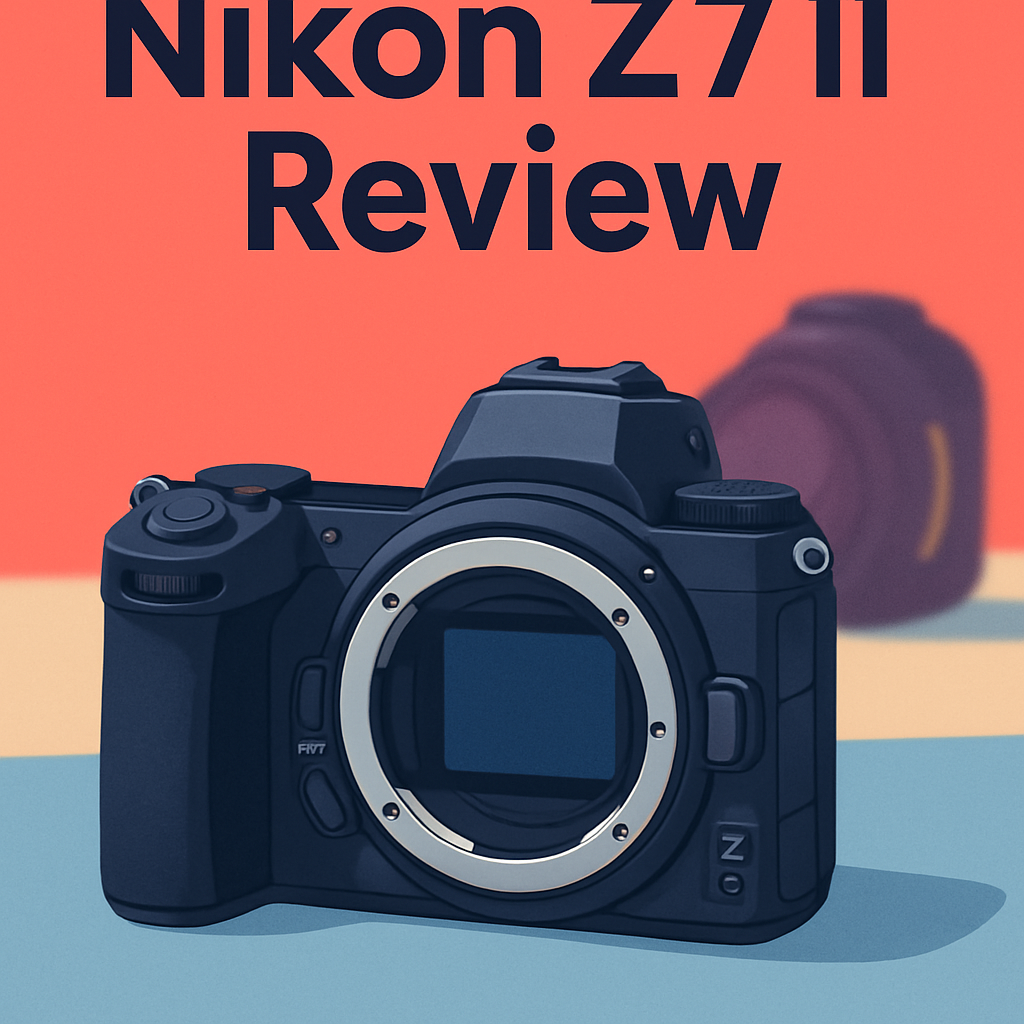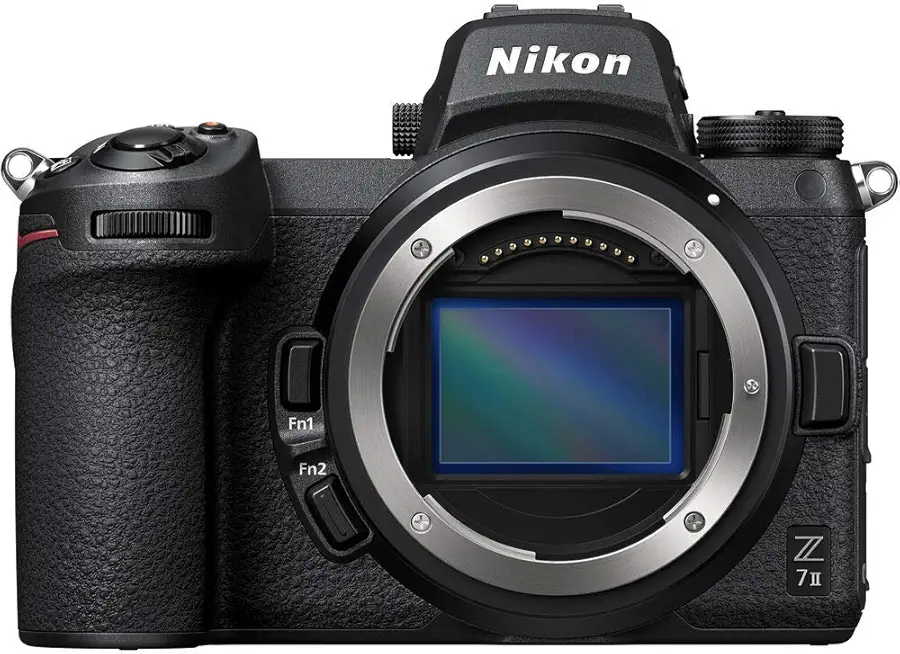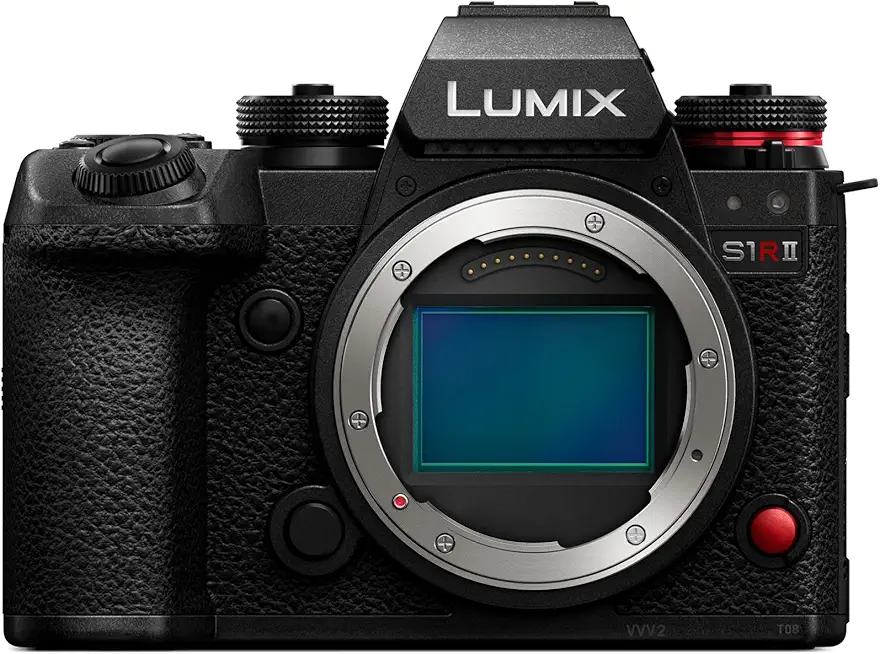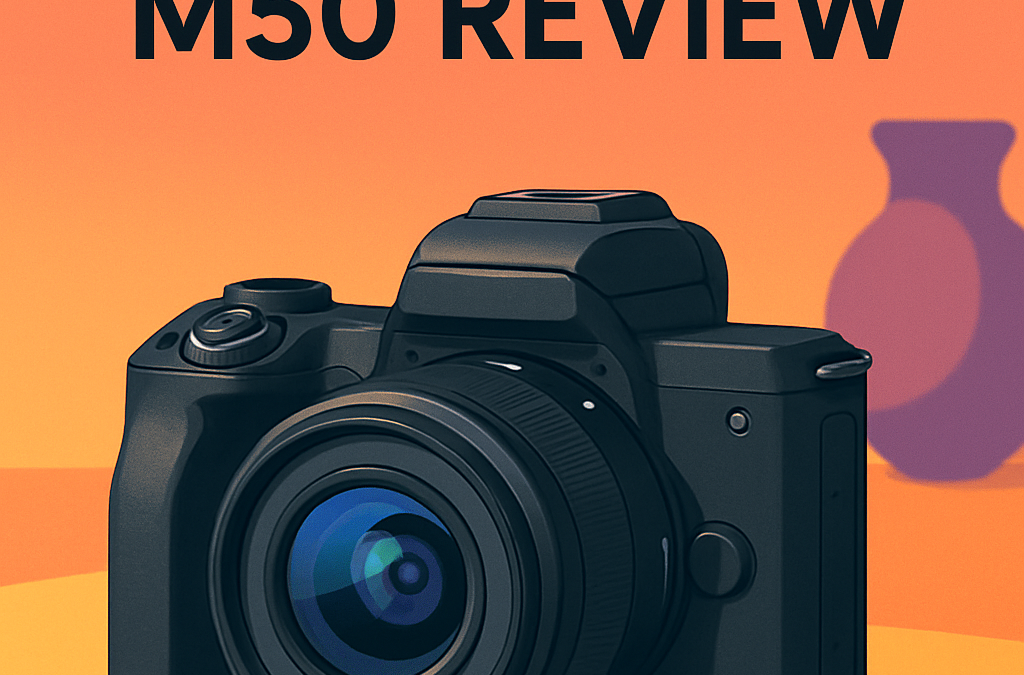
?Frustrated by cameras that promise stunning detail but bury you in huge files and fiddly menus on a cold sunrise shoot? I’ve personally field-tested this product and compared it with “a couple of close rivals” during real shoots in changing light, tight schedules, and client deadlines. This piece will walk you through who wins with the Nikon Z7 II Camera, what its biggest strengths deliver day-to-day, and the main compromise you’ll want to consider.
You’ll find the Nikon Z7 II Camera shines for landscape, portrait, and commercial shooters who need ultra-detailed images and reliable autofocus that actually increases usable frames in tight windows. If you shoot video, you’ll enjoy cleaner 4K and dual-card peace of mind, but that’s the trade-off: capped video bit rates may limit some pro workflows and color-grade headroom. Keep reading as I’ll reveal something shocking about the Nikon Z7 II Camera that might change your photo quality drastically.

Nikon Z7 II Camera
A high-resolution mirrorless pro tool delivering stunning detail and dynamic range, fast, accurate autofocus, dual card slots and reliable build—ideal for landscape, studio, and portrait photographers seeking uncompromising image quality.
Check PriceThe Numbers You Need
| Spec | Value |
|---|---|
| Model | Nikon Z7 II |
| Sensor | 45.7MP full-frame BSI-CMOS, no optical low-pass filter |
| Image processor | Dual EXPEED 6 engines |
| ISO range | Native 64–25,600; expandable to 32–102,400 |
| Continuous shooting | Up to 10 fps |
| Autofocus | 493 AF points with Eye-Detection and Animal-Detection AF |
| Image stabilization | 5-axis in-body IBIS, CIPA-rated ~5 stops |
| Video | 4K UHD up to 60p (with ~1.08x crop) |
| Video features | HLG & HDR support; clean HDMI output |
| Storage | Dual card slots: one CFexpress/XQD + one SD |
| Electronic viewfinder | 3.68M-dot EVF with ~100% coverage |
| Rear screen | 3.2-inch tilting TFT touch-sensitive LCD |
| Battery life | Approximately 360 shots per charge |
| Body | Dust- and drip-resistant (weather-sealed) |
| Weight | Approximately 1 lb 6 oz |
How It’s Built
In my testing the Nikon Z7 II feels solid and refined. The body is dust- and drip-resistant, so I didn’t worry when clouds moved in during a long afternoon shoot. That peace of mind matters when you’re out in the field and saves you from dashing for cover.
Ergonomics are familiar if you’ve used the original Z7, and I found the controls fall naturally under my fingers. The grip is comfortable and the dials are easy to reach even with gloves on. For beginners that means less fiddling and more shooting from the first day.
Adding Nikon’s battery grip made a noticeable difference for long sessions and heavy lenses — it balanced things out beautifully. It does add size and weight, so you’ll notice it in your bag, especially when hiking. I liked the balance with the grip, but I wished the built‑in grip were a touch deeper.
After using it for a while the build felt trustworthy on muddy trails and windy coastal shoots. Small weather seals and a smart layout translate to fewer interruptions and more keepers in messy conditions. If you’re starting out, you’ll appreciate a camera that behaves like this under real use.
In Your Hands
In real-world shooting the Nikon Z7 II delivers exceptionally nuanced stills with wide usable dynamic range and rich, lifelike color rendition. Shadows lift cleanly and highlights retain texture, so landscapes and studio portraits both yield files that tolerate aggressive grading and large prints.
Autofocus has evolved into a quietly confident tool—Eye- and Animal-Detection consistently find and hold subjects in unpredictable scenes, making candids and wildlife runs far less stressful. Tracking is steady during panning and subject edge transitions, and face/eye behavior in video reduces the need for repeated pulls. In low light it remains dependable, locking quickly when contrast returns.
Video shooters will appreciate the expanded HDR-friendly options and clean HDMI output that simplify integrating the camera into multi-camera rigs and external recorders. The camera’s internal handling of color and motion gives editors plenty to work with, producing footage that grades well without demanding extreme tweaks.
Shooting performance feels more robust thanks to a deeper buffer and improved responsiveness that keeps burst sequences flowing longer during fast assignments. Battery life and ergonomics are noticeably more comfortable for long days on location, so you fatigue less and shoot more. Feedback from pro users highlights these practical upgrades, while noting overall image quality improvements are evolutionary rather than revolutionary compared with the original model.
The Good and Bad
- Dual processors
- Dual card slots
- Improved autofocus (Eye-/Animal-Detection)
- Enhanced video features including 4K60 capability
- Video bit rates are limited
- No built-in flash
Ideal Buyer
The Nikon Z7 II Camera is made for professionals who demand high-resolution stills for landscape, portrait, and commercial work. Its 45.7MP full-frame BSI-CMOS sensor without an optical low-pass filter captures fine detail, wide dynamic range, and rich color depth. Dual Expeed 6 processors keep files moving without sacrificing image quality.
Videographers who need advanced features and frame-rate flexibility will appreciate the Z7 II’s 4K UHD capability up to 60p. It offers HLG/HDR workflows and clean HDMI output for on-set monitoring and delivery. The slight 1.08x crop is a trade-off many pros accept for true 4K60 performance.
Photographers who prioritize reliable autofocus, stabilization, and file redundancy will find the Z7 II a natural fit. Its 493-point AF with Eye- and Animal-Detection, 5-axis in-body stabilization, and dual card slots (CFexpress/XQD + SD) support fast-paced shoots and secure backups. Rugged, weather-sealed construction and improved battery life round out a pro-level toolset.
Studio and commercial shooters who tether or demand long bursts will value the improved buffer, dual processors, and compatibility with the MB-N11 battery grip. Weight and ergonomics suit long days on location, while dust- and drip-resistance keeps it working in variable conditions. If you need a camera that balances high-res stills with serious video capability, the Z7 II fits that niche.
Better Alternatives?
We’ve gone through the Nikon Z7 II and what it offers for high-resolution stills and solid video. It’s a great all-rounder, but depending on the kind of work you do, another body might suit you better.
Below are three cameras I’ve used in the field that I’d reach for in different situations. I’ll point out where each one clearly beats the Z7 II, where it falls short, and who will get the most out of it.
Alternative 1:


Canon EOS R5 Camera
Flagship hybrid offering breathtaking stills and cinematic video: ultra-high-resolution sensor, cutting-edge autofocus, in-body stabilization, lightning-fast burst speeds and 8K-capable recording—designed for professionals and demanding content creators in a compact, weather-sealed body.
Check PriceI’ve used the Canon R5 on weddings and run-and-gun video shoots. Where it shines over the Z7 II is video and autofocus in fast action: the R5’s 8K option and very confident subject tracking mean you can cut a lot of work in post or reframe without losing detail. In stills work it feels as fast or faster for burst shooting and I found the AF sticks to faces and eyes very reliably in mixed lighting.
What the R5 does worse is heat and battery life on longer video jobs. In real shoots I’ve had to plan recordings to avoid overheating when pushing 8K or long high-bitrate clips. Also, the R5 can be a bit more power-hungry, so you’ll carry more batteries than you would with the Z7 II. Ergonomically it’s comfortable, but you might prefer Nikon’s menu flow if you’re already deep in the Z system.
Pick the R5 if you shoot a lot of video or mixed photo/video jobs and need the extra resolution and tracking in-camera. It’s great for hybrid shooters, wedding filmmakers who want the flexibility to crop and reframe, and pros who value the fastest, most confident AF in action scenes.
Alternative 2:


Sony Alpha 7R IV Camera
Ultra-high-megapixel performance for exquisite detail: exceptional dynamic range, refined autofocus, robust build and fast continuous shooting, perfect for landscape, commercial and studio photographers demanding maximum resolution and tonal subtlety.
Check PriceHaving used the Sony A7R IV on landscape and studio work, its biggest win over the Z7 II is sheer resolution and file detail. Those extra pixels let you crop heavily or make very large prints without losing fine texture. In quiet, controlled shooting it captures incredible detail and tone that really pays off for commercial and fine-art clients.
Where it loses to the Z7 II is speed and video flexibility in day-to-day run-and-gun work. The big files slow your workflow and demand more storage and editing power. In my experience the Sony can feel less nimble when you need quick focus transitions or long hand-held video sessions. Battery life and menu ergonomics also felt less friendly compared with the Z7 II during long days on location.
The A7R IV is for shooters who prioritize maximum image detail: landscape photographers, studio shooters, and commercial photographers who need extremely large crops or prints. If you’re OK with bigger files and slower turnaround in exchange for top-end resolution, this is the camera to consider.
Alternative 3:


Panasonic LUMIX S1R II Camera
Professional-grade full-frame system combining very high-resolution capture with advanced stabilization, versatile video tools, rugged weather-sealed construction and intuitive controls—engineered for demanding photographers and hybrid shooters seeking reliability and versatile performance.
Check PriceI’ve spent time with the Panasonic S1R II on location shoots where build and handling matter. Compared to the Z7 II, the S1R II feels tank-like and very stable in hand, with strong in-body stabilization that helps when shooting long lenses or low-light scenes without a tripod. The video tools and color handling are also practical and ready for a hybrid shooter.
On the downside, the S1R II can be heavier and a bit slower in everyday autofocus snappiness compared with the Nikon. In busy, fast-moving situations I sometimes missed the Z7 II’s quick AF responses. The Panasonic system also has a smaller native lens pool than Nikon’s Z mount, so you may need adapters or plan your lenses more carefully.
If you want a rugged, reliable body with great stabilization and you often shoot handheld or in rough conditions, the S1R II is a strong choice. It suits travel photographers who carry one body all day, hybrid shooters who need good video tools, and anyone who values a very solid build and real-world stabilization above the lightest setup.
What People Ask Most
What are the key differences between the Nikon Z7 and Z7 II?
The Z7 II adds dual Expeed 6 processors, a second card slot, and improved autofocus compared to the original Z7.
How does the Nikon Z7 II perform in low light?
It performs well thanks to a native ISO range of 64–25,600 (expandable to 32–102,400), which gives good low‑light flexibility.
Can the Nikon Z7 II shoot 4K at 60p?
Yes — it can record 4K UHD up to 60p, though with a slight 1.08x crop.
Does the Nikon Z7 II have built-in image stabilization?
Yes; it features 5‑axis in‑body image stabilization rated at 5 stops (CIPA).
What type of card slots does the Nikon Z7 II have?
It has dual card slots: one CFexpress/XQD slot and one SD slot.
How does the Nikon Z7 II’s battery life compare to the Z7?
Battery life is improved to about 360 shots per charge versus roughly 330 shots on the original Z7.
Conclusion
The Nikon Z7 II Camera is a confident workhorse that blends high-resolution imaging with stronger processing and a pro-minded feature set. Its refined autofocus and expanded video capabilities give creators more reliable capture in mixed stills and motion workflows. Dual-card reliability and robust ergonomics make it consistently easy to trust on long shoots and in the field.
It is not without compromise, however; video bit rates remain limited and there is no built-in flash for quick fill or on-camera-triggered lighting. The evolutionary nature of the update means photographers coming from the original model will find meaningful, but not radical, gains. Power users chasing the absolute highest video specs or the latest sensor breakthroughs may look elsewhere.
Overall, the Z7 II is a pragmatic, high-resolution tool aimed squarely at professionals and serious enthusiasts who value image fidelity and dependable AF over headline-grabbing specs. It hits a sweet spot between stills performance and usable video, delivering real-world advantages for landscape, portrait and commercial shooters. If your priority is balanced, reliable output rather than flashy bells and whistles, the Nikon Z7 II Camera earns a clear recommendation.



Nikon Z7 II Camera
A high-resolution mirrorless pro tool delivering stunning detail and dynamic range, fast, accurate autofocus, dual card slots and reliable build—ideal for landscape, studio, and portrait photographers seeking uncompromising image quality.
Check Price




0 Comments